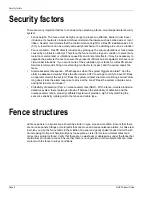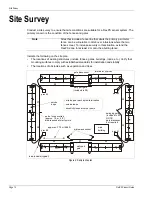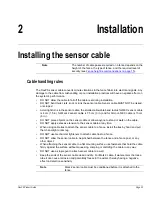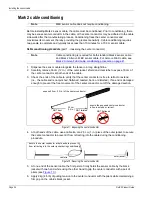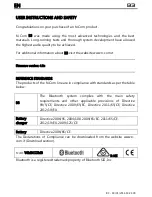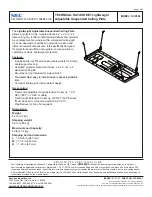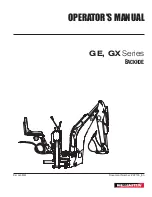
Fence structures
Page 10
FlexPS Product Guide
Senstar recommends using Armour-FLEX cable when protecting barbed wire. To protect both the
fence and the barbed wire, use one zone of Armour-FLEX cable installed in a saw tooth pattern on
the barbed wire, and use sensor cable on the fence fabric for the second zone (see
).
This configuration allows both zones to be properly calibrated for the specific mounting surface.
Razor ribbon
FlexPS sensor cable can be installed on razor ribbon. However, due to the likelihood of the sensor
cable being damaged, Armour-FLEX cable is recommended. The razor ribbon must be secured so
that it does not move in the wind. Use tensioning wires to secure the coil and to prevent the razor
ribbon from separating if it is cut.
Figure 2: Recommended cable installation on barbed wire fence
Figure 3: Razor ribbon
Armour-FLEX on barbed wire array
sensor cable on fence fabric
both channels of one processor used:
CH A with Armour-FLEX on barbed wire
CH B with sensor cable on fence fabric
bracing wire
barbed wire array
outrigger
fence fabric
razor ribbon
Armour-FLEX sensor cable
tensioning wires (2)








